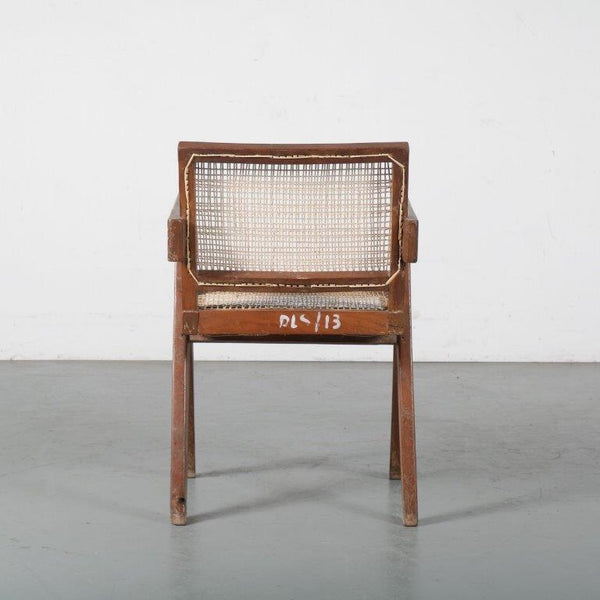A perfectly unique chair, every time.
Our Pierre Jeanneret design chair stays true to the 1950s chairs in as many ways possible. Perhaps most immediately noticeable is our use of solid durable teak and square-woven rattan. Our skilled craftspeople invest a tremendous amount of energy and time into using these traditional techniques to make the high quality chair that we proudly present to you today.
We didn’t stop there.



Above: the painted numbering system on the 1950s chairs.
We also inscribe every chair with its own individual identification number. This is an homage to the cataloguing system implemented by Jeanneret when crafting the chairs in the 1950s. Furnishing the entire city of Chandigarh was no small task so Jeanneret did not work single-handedly. Multiple carpentry workshops throughout the city were simultaneously producing the chairs, so Jeanneret came up with a system of numbers and letters that was painted on the back of the chairs as a method of keeping inventory. Decades later, the numbering system now serves another purpose -- to prove authenticity of the 1950s chairs. We think Jeanneret’s dual-purpose system was pretty smart so we decided to employ something similar when creating our chair. On the underside of every Object Embassy chair there is a unique code made of numbers and letters which can be used to specify the batch in which the chair was made and also an individual number. Although similar to Jeanneret’s, our system has had a 21st century update, as we use state-of-the art deep wood laser engraving, rather than paint. This allows for a sleek, subtle appearance which does not overwhelm the chair. Our logo is also engraved, so that you can rest assured that you have a genuine Object Embassy chair.

Above: the unique, deep laser-engraved code on one of our chairs.
It's very important to us that we do good. Good as a company, good for our suppliers, their craftsmen and good for the planet. We only work with teak from responsible sources and track the full supply chain - from log to chair. The coding system allows us to track the chair’s lifespan from wood source to the fulfilment centre to its final destination. To do so we collaborate with the independent third-party organisation DoubleHelix. DoubleHelix is a technology firm from Singapore that enables brands and manufacturers to track their wood products all the way back to the source. It has a multi-angle approach. They have developed a unique technology by which they can track timber using DNA or isotopic signatures all the way back to its source in the forest of harvest.
At Object Embassy, there is a reason we like to focus on making just one model as it allows us to create a perfect result every time. Additionally, working with the coding system also allows us to put great care into making sure each product is meticulously crafted to our highest standards, every time. And if this would ever happen to not be the case, we are able to work on a personalised basis to get to the root of the problem. The final benefit is that the code on each chair distinguishes one from another so you know that your chair is uniquely yours.



